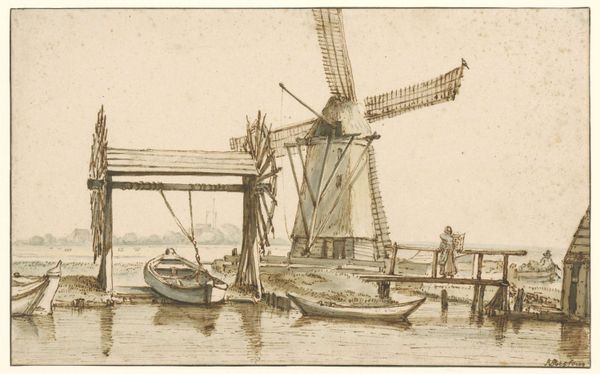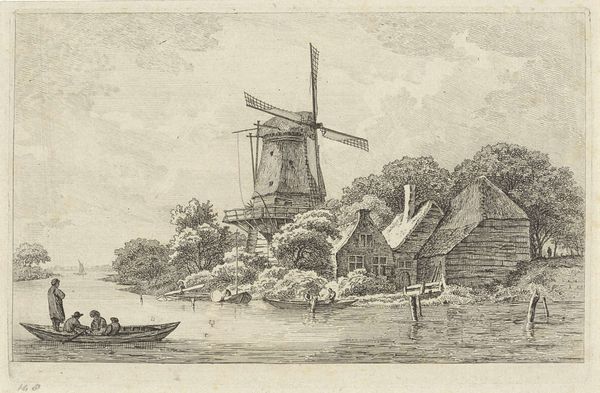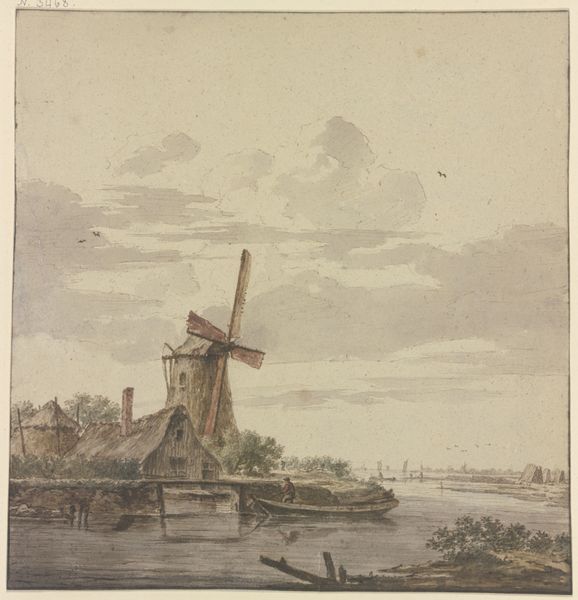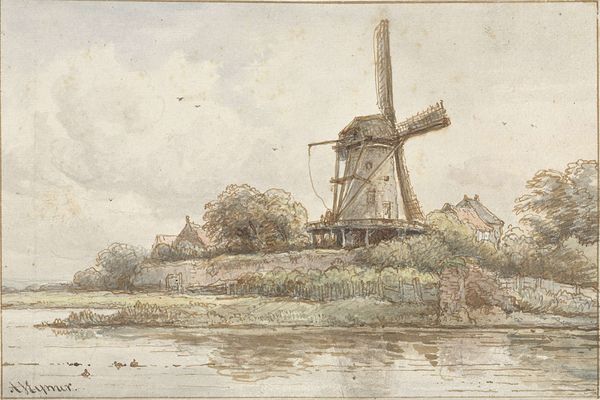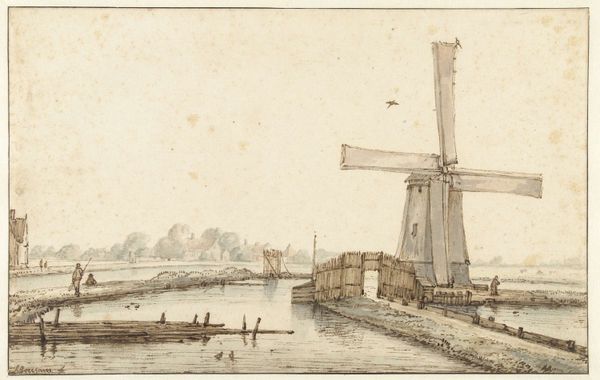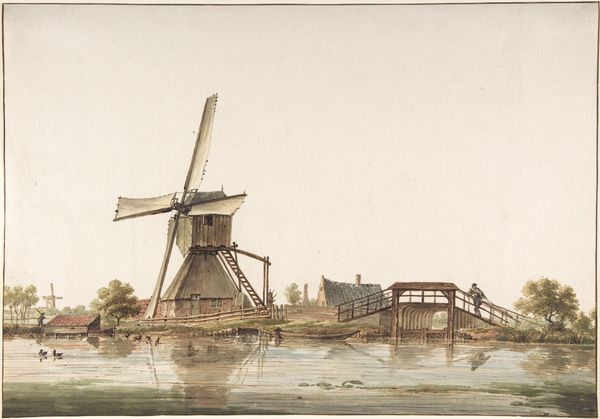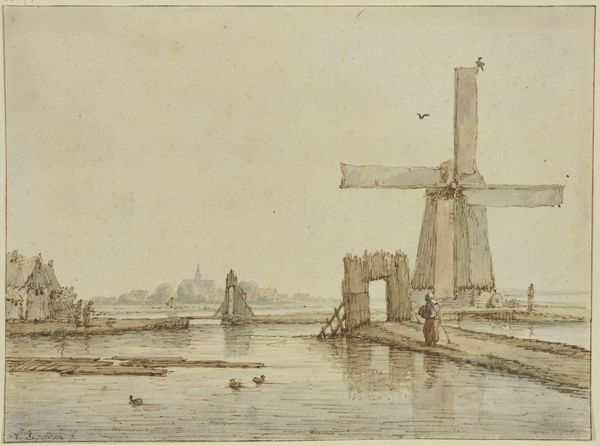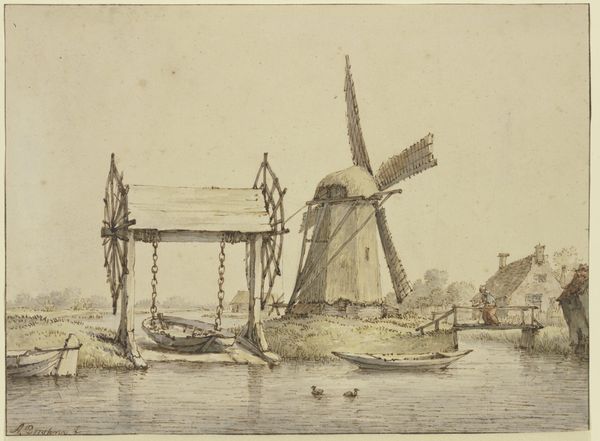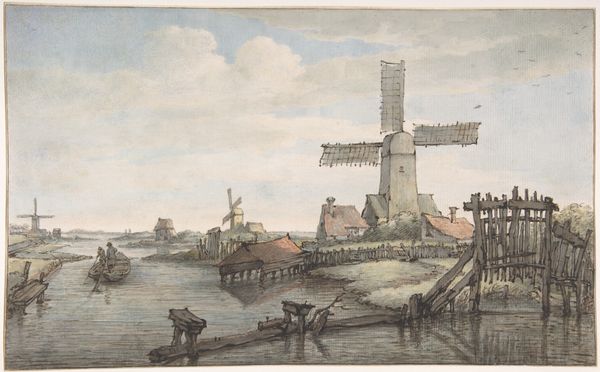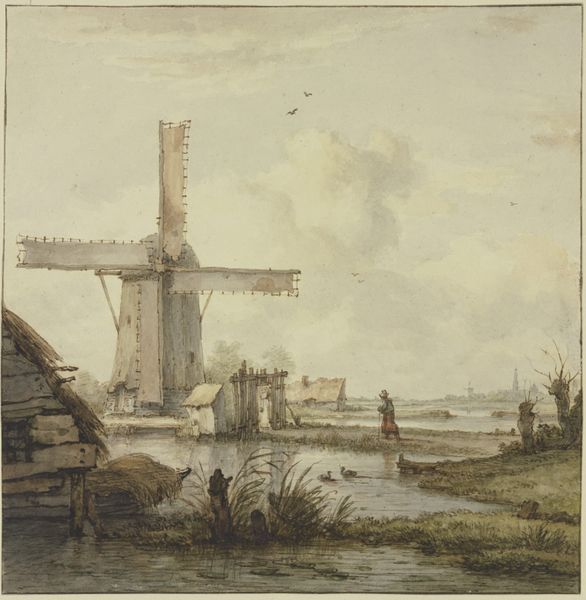
drawing, watercolor, ink, pencil
#
drawing
#
dutch-golden-age
#
pencil sketch
#
landscape
#
perspective
#
watercolor
#
ink
#
pencil
#
watercolour illustration
#
genre-painting
#
watercolor
#
realism
Dimensions: height 221 mm, width 319 mm
Copyright: Rijks Museum: Open Domain
Curator: Here we have "Landscape with Windmill," a drawing made between 1776 and 1822, attributed to Jan Hulswit. The piece combines ink, pencil, and watercolor. Editor: My first impression is quietude. The subtle, muted tones and the gentle reflections in the water create a peaceful scene. The composition is interesting with the windmill dominating the space but the eye also meanders along the shoreline and across the bridge. Curator: Windmills, particularly in Dutch art, symbolize prosperity, resourcefulness, and a hard-working society. This one looms large. Note also how its position speaks to a long relationship with the waterways – not just a functional object but part of an entire landscape and way of life. This symbolizes how technology shapes social identity and our ongoing dialogue with the natural environment. Editor: Yes, the artist’s handling of light and shadow definitely reinforces that message. The windmill, while imposing, doesn't feel harsh or industrial. The reflections create a softened doubling effect. Also, the delicate hatching technique used to build up the forms emphasizes the windmills' structure, yet also lends a sense of fragility. There's a subtle tension between monumentality and impermanence. Curator: Consider that it wasn’t produced during the Dutch Golden Age, yet it harkens back to that era. In the late 18th and early 19th centuries, there was an idealization of simpler times, an embrace of traditional landscapes as symbols of cultural pride. This drawing speaks to a cultural memory – an invocation of Dutch identity through familiar and comforting symbols. Editor: The understated color palette really supports this, too. The monochrome tonality flattens the space, emphasizing the lines and textures over the hues themselves. There’s a deliberate simplicity here; the eye isn't distracted. The artist guides the viewer carefully. Curator: I agree, this is a deliberate echo, reflecting an earlier Golden Age – Hulswit’s use of watercolors feels particularly suited to evoke a shared longing for a past, both authentic and imagined. Editor: Precisely, and after having spent a moment really examining this, it’s that balance of structure, space, and symbolism that make it truly captivating. Curator: Indeed. It leaves us contemplating our relationship to the land and the symbols we attach to it.
Comments
No comments
Be the first to comment and join the conversation on the ultimate creative platform.

